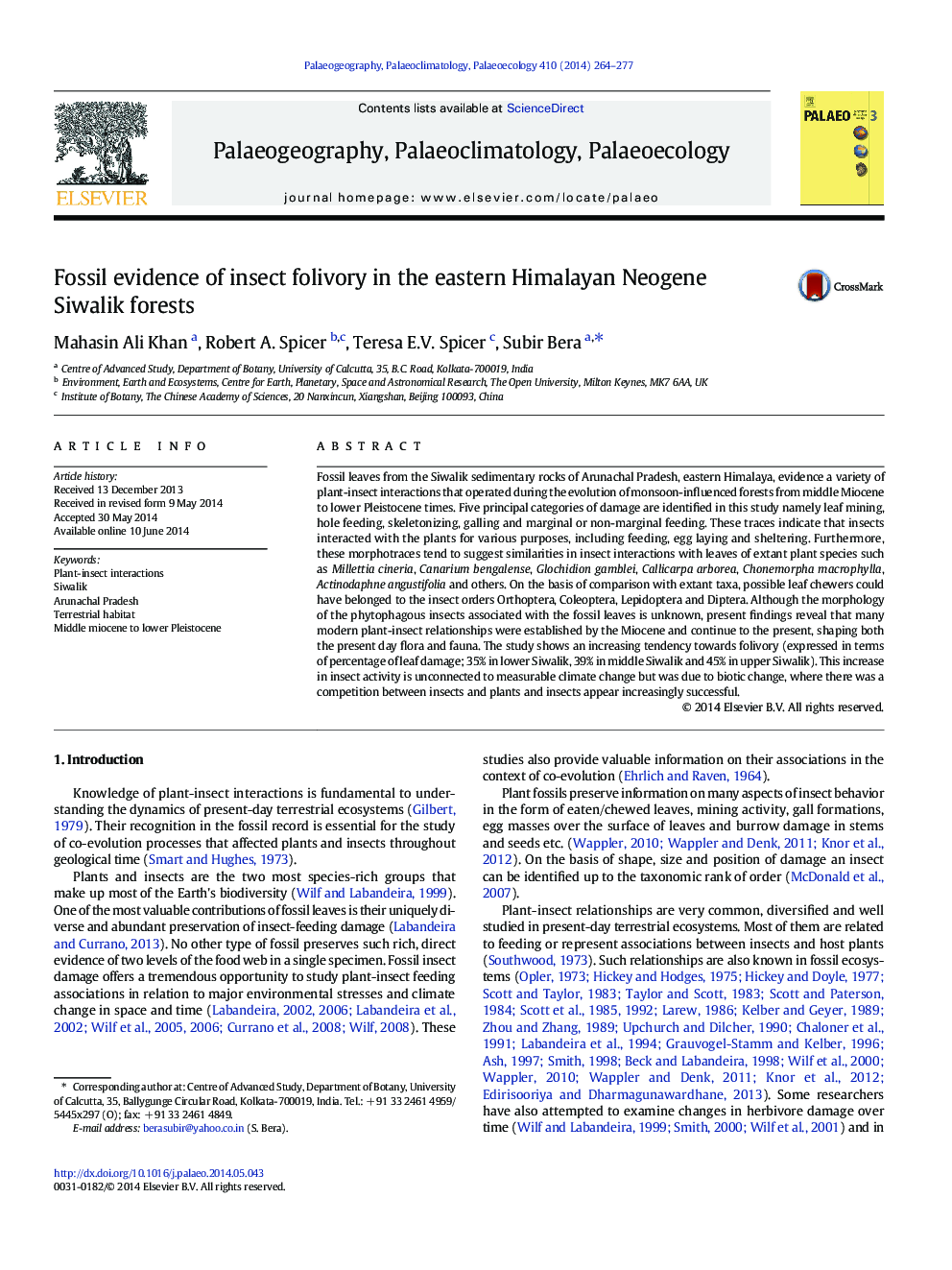| کد مقاله | کد نشریه | سال انتشار | مقاله انگلیسی | نسخه تمام متن |
|---|---|---|---|---|
| 4466125 | 1622180 | 2014 | 14 صفحه PDF | دانلود رایگان |
• First documentation of insect folivory in the Neogene Siwalik forests
• Five principal categories of damage identified
• Folivory in the Siwalik forests increases from the Neogene to the Pleistocene.
• This increase in insect activity is unconnected to measurable climate change.
Fossil leaves from the Siwalik sedimentary rocks of Arunachal Pradesh, eastern Himalaya, evidence a variety of plant-insect interactions that operated during the evolution of monsoon-influenced forests from middle Miocene to lower Pleistocene times. Five principal categories of damage are identified in this study namely leaf mining, hole feeding, skeletonizing, galling and marginal or non-marginal feeding. These traces indicate that insects interacted with the plants for various purposes, including feeding, egg laying and sheltering. Furthermore, these morphotraces tend to suggest similarities in insect interactions with leaves of extant plant species such as Millettia cineria, Canarium bengalense, Glochidion gamblei, Callicarpa arborea, Chonemorpha macrophylla, Actinodaphne angustifolia and others. On the basis of comparison with extant taxa, possible leaf chewers could have belonged to the insect orders Orthoptera, Coleoptera, Lepidoptera and Diptera. Although the morphology of the phytophagous insects associated with the fossil leaves is unknown, present findings reveal that many modern plant-insect relationships were established by the Miocene and continue to the present, shaping both the present day flora and fauna. The study shows an increasing tendency towards folivory (expressed in terms of percentage of leaf damage; 35% in lower Siwalik, 39% in middle Siwalik and 45% in upper Siwalik). This increase in insect activity is unconnected to measurable climate change but was due to biotic change, where there was a competition between insects and plants and insects appear increasingly successful.
Journal: Palaeogeography, Palaeoclimatology, Palaeoecology - Volume 410, 15 September 2014, Pages 264–277
